What is the difference between a cable and a wire?
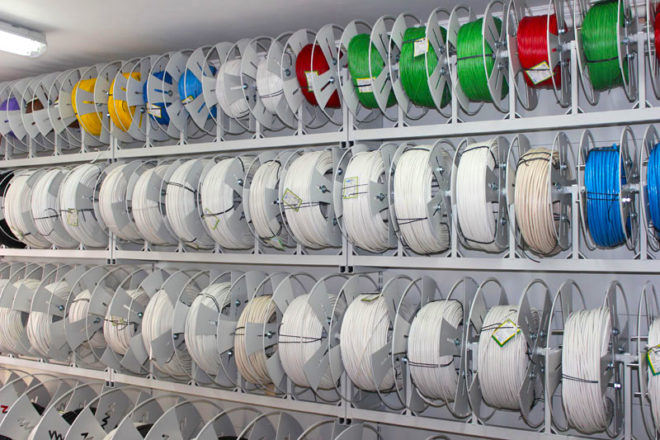
According to Wikipedia, a cable is a construction of one or more sheathed conductors. For the uninitiated, the differences between the cable and the wire are absolutely not noticeable, but they are. Sometimes there are moments in life when it is necessary to determine exactly what their differences are.
Content
Cable
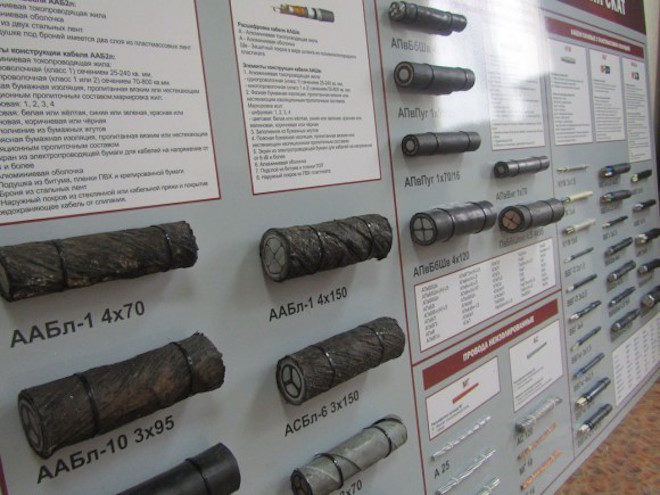
In order to understand what is the difference between a cable and a wire, they need to be considered in detail. We already know what a cable is. For a more detailed study, it's time to get acquainted with its classification and varieties. First of all, they are divided into application groups:
- power;
- assembly;
- communication;
- management;
- radio frequency;
- optical.
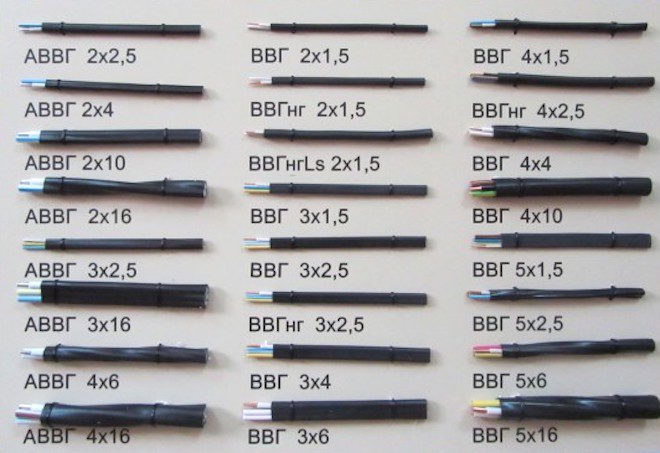
Power ones are designed to transmit electricity. They are laid permanently and are used when connecting mobile electrical consumers.
Mandatory elements that make up the cable are:
- conductive core;
- its isolation;
- shell.
Made of copper and aluminum. Supply voltage - up to 750kV. They have a long service life (30 years). The best insulation is XLPE.

Mounting ones are used for inter-device mounting of electrical devices. Supply voltage - up to 500 V. The main material of the current-carrying conductors is copper. They are stable in performance at elevated temperatures.
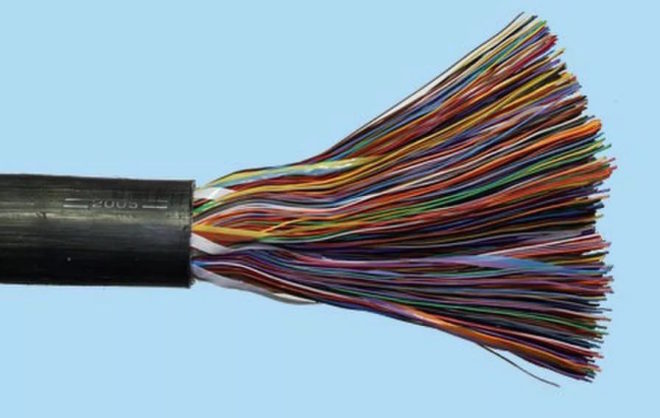
Communication cables are used in signaling and wire communication. For example, a corrugated cocoon-shaped waveguide is used in radio engineering and radar systems. They are widely used for intercity, interregional and city communication.

Control cables are used for control and lighting circuits in machine tools and other mechanisms with voltages up to 600 V.
Radio frequency and optical media carry energy and signals at specific radio frequencies or in the optical range.
In addition to groups, these electrical conductors have a number of characteristics by which they are classified. This includes parameters such as insulation, shielding, the number of current-carrying strands and their material from which they are made. There are a number of other signs of cable subdivision. The classification of electrical products is detailed in the ISO 11801 2002 standard.
The wire
From GOST 15845-80 it follows that a wire is a cable connection containing one or more wires or insulated conductors, on top of which there is a light non-metallic sheath. The same GOST indicates that the wire is not laid in the ground, which differs from the cable.
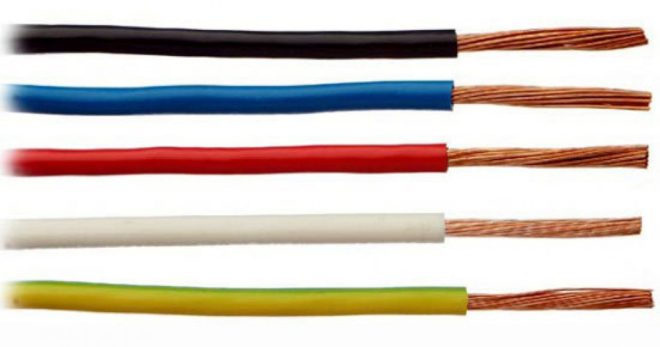
Wires are represented by a wide range of classifications:
- by conductivity;
- section (diameter);
- material;
- type of insulation.
There are a number of other signs by which these electrical products are classified.
The types of wires generally determine their area of use. They can differ from each other in many ways. There are winding, assembly, automotive, connecting, insulated and others. They are not isolated, for example, in overhead power lines (PTL). More detailed information about this can be easily found on Internet sites and in numerous videos.
Wire and cable have some similarities in appearance. But there are differences between them, and they are clearly visible to a specialist.
Difference between cable and wire
To understand what is the difference between any cable and a wire, it is enough to have basic knowledge in the field of electrical engineering.
Insulation
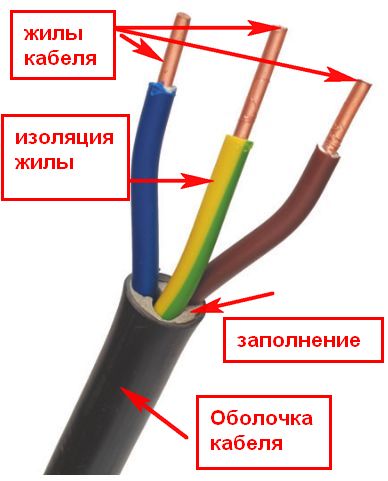
The first difference is interpreted by GOST 15845-80. He clearly defined that the wire does not have separate insulation for each current-carrying core.A conductor or strand of multiple conductors may or may not have some kind of insulating sheath. The same GOST determines that each current-carrying conductor in a cable has its own insulation.
Thus, one of the main differences between the products under consideration will be the presence of insulation on each current conductor and a common insulating shell. If each conductor is in separate insulation, then we have a cable. If there is no insulation, or several bare conductors are enclosed in an insulating sheath - the wire.
Marking

Knowing how to read the brands of electrical products, you can also determine the difference between them. What is the difference between a cable and a wire in the marking? Visually - in letters and numbers. In reality, it looks like this. There is an inscription on the insulation - AVVGng 3 * 2.5. After decoding it, we see that we have a cable in front of us. It contains three aluminum conductors. Each with a cross section of 2.5 mm², is in polyvinyl chloride insulation (PVC). All current-carrying conductors are enclosed in a common sheath, also made of PVC. NG means that it does not support combustion.
A varied number of letters in the marking characterizes the product in many of its parameters. The presence of the letter B in the brand means that the cable is armored, W means protection in the form of a hose, R - rubber protection, E - the presence of a screen. By the presence of letters in the marking, it is easy to recognize the type of product, and to determine the possibility of its application in a particular case.
Electric wires also have their own markings. It is practically no different from cable marking. The fact is that in electrical engineering, marking standards correspond to GOST and are identical for all products. If the insulation of the product is written "PGV", it means that we have an installation wire in front of us, with increased flexibility in PVC insulation. More detailed information on marking wires can also be taken from electrical reference books or from Internet sites.
Terms of use
The cable, in contrast to the wire, has found wider application in special conditions. Having increased protection against mechanical and aggressive damage, it is laid under water. All underground communications are carried out only by him. In addition, they are used in mines, fire-hazardous rooms, rooms with increased corrosive activity and other places.
The wires are used only inside electrical distribution devices. It is recommended to use cables or busbars outside of them. As an example, consider the PV-3 wire. This is an assembly copper wire with a stranded core. Suitable for use in saunas and bathrooms. Does not burn. Found wide application in the installation of apartment wiring. It is more flexible than other wires.
Life time
Generally, cables are more durable to use than wires. This is primarily due to the presence of a minimum of double insulation. In addition, some of them are made in an armored shell, which also increases the service life. It is generally accepted that the average life of this product is 30 years. The wire is about half as long.
Voltage
In various sources, there is a discussion of the question of the difference between a cable and a wire in voltage. Should I take this parameter into account? The answer is unequivocal - yes, it is. Proceeding from the fact that cables have at least double insulation of current-carrying conductors, it becomes clear that high currents and high voltages can be passed through them.
Therefore, the technical characteristics of the products indicate the maximum voltage they are designed for. If for cables they reach hundreds of kilovolts, then the wires are usually limited to a maximum of only one kilovolt.
The difference between cable and wire is popularly explored in this video:
Choosing between cable and wire
When planning construction or repairs, you can independently decide what to buy - wire or cable. It becomes possible to calculate in advance the required footage of electrical communications. This is necessary primarily in order not to overpay extra money. Knowing the differences between cable and wire and installing exactly what needs to be installed in the right place, increases the safety of the entire electrical system. This means that the safety, primarily fire safety, of the object as a whole is increased, whether it be an apartment or a cottage.




